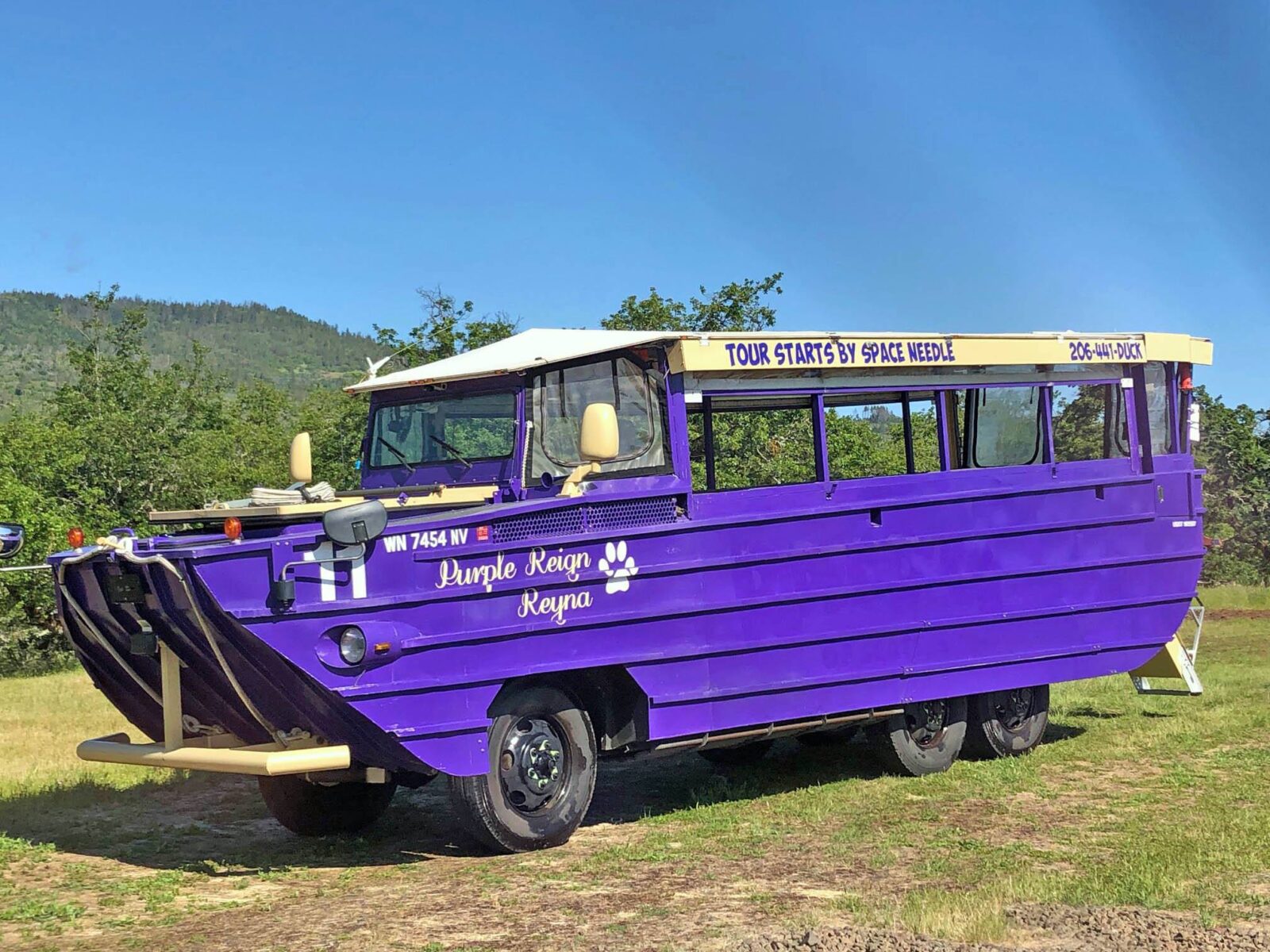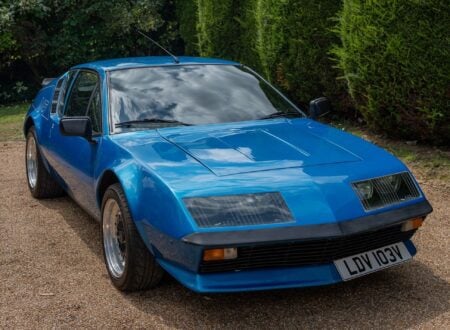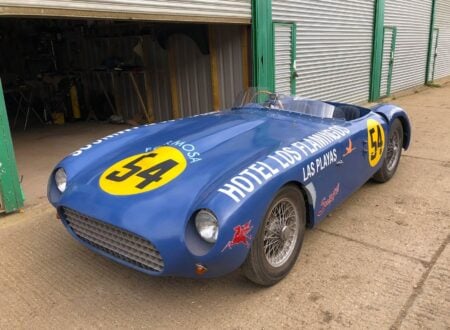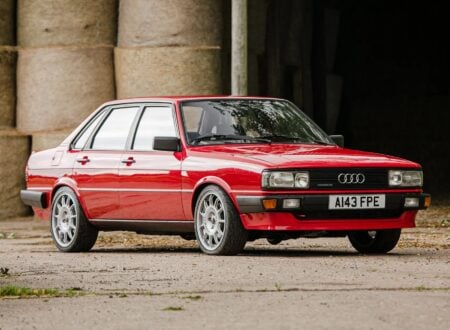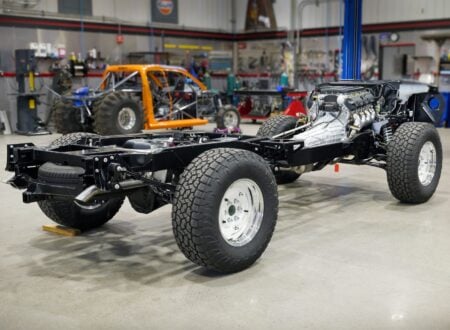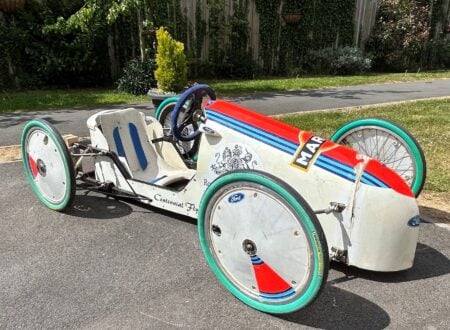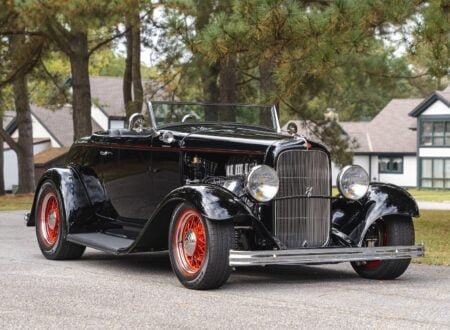This is a WW2-Era DUKW 6×6 amphibious vehicle original built for the US Military in the 1940s with a hull designed by yacht designer Rod Stephens, Jr. In the decades since the war many of these amphibians have been converted into tour vehicles nicknamed “Ducks.”
One thing we haven’t seen much of is camper conversions of DUKWs, which seems odd as they would make great vehicles for exploring lakes and large rivers as well as the towns around them – a far cry from their original use as a D-Day landing vehicle on the beaches of Normandy.
Fast Facts – The DUKW 6×6 Amphibious Vehicle
- The project to build the DUKW 6×6 amphibious vehicle, known as the “Duck,” was on the verge of cancellation until a successful rescue operation of a US Coast Guard ship in Provincetown, Massachusetts, showcased its capabilities. The vehicle, facing gale force winds and high seas, successfully rescued the crew from a sandbar, which not only proved its effectiveness, but also secured a contract to manufacture it for military use.
- The DUKW was designed by Rod Stephens Jr. of Sparkman & Stephens, Dennis Puleston, and Frank W. Speir of MIT, with only a very short timeline. The design enabled it to perform amphibious landings, notably during the D-Day invasion, and over challenging ocean crossings like the English Channel. It was based on the platform of the GMC AFKWX truck, which accelerated production and ensured broad parts availability.
- The original DUKW was powered by a 269 cubic inch GMC Model 270 straight-six engine, with a 5-speed overdrive transmission, and a dual-range transfer case for propeller and/or axle operation. Modifications for civilian use sometimes include a conversion to modern turbodiesel engines and an Allison 4-speed automatic transmission, assisting with ease of operation for tour purposes.
- Over 21,000 DUKWs were produced from 1942 to 1945, with many surviving vehicles later converted into tourist vehicles for city and waterway tours. These “Ducks” have become popular attractions in cities like Seattle, offering unique historical insights and experiences to thousands of tourists.
The DUKW “Duck” 6×6 Amphibious Vehicle
The DUKW 6×6 amphibious vehicle, better known simply as the “Duck,” was developed during WWII for the US Military, but the prototype was rejected and the program faced imminent cancelation. One of the prototypes happen to be near Provincetown, Massachusetts when a major storm blew a US Coast Guard ship aground on a sandbar, no other rescue vessels could save it, and so the DUKW was called into action. What happened next saved the program and got the vehicle fast-tracked for production and deployment.
Above Video: This is an original WW2 newsreel film showing the DUKW in action, both driving from the beach into the water, and being deployed from ships on resupply missions.
The DUKW was sent out to sea to save the Coast Guard crew in 60 knot gale force winds and high seas. Few thought the new and unproven design would successfully perform a rescue, with many fearing that it would sink or become incapacitated requiring an additional rescue operation.
As it happened, the DUKW performed flawlessly. It made it out to the sandbar, drove up onto it, collected the crew, and then navigated its way back to shore. This real-world demonstration of the vehicle’s potential saved it from the scrapheap of unsuccessful military projects, production began not long after and quickly ramped up.
This rescue operation and the later feats performed by the DUKW are a testament to the design genius of yacht designer Rod Stephens Jr. of Sparkman & Stephens, Dennis Puleston, a British deep-water sailor, and Frank W. Speir from the Massachusetts Institute of Technology (MIT).
On a compressed timeline the men developed an amphibious 6×6 vehicle that proved so capable it could cross the English Channel fully loaded, drive up onto the beach at Normandy during the D-Day invasion, and deploy its troops.
The vehicles were used extensively in Europe, the Pacific, and North Africa during the war, often for resupply missions from ships at anchor to troops on the shore and inland.
A total of 21,147 were made between 1942 and 1945, and though they weren’t originally designed to last longterm many have been converted into tourist buses that can take visitors on tours of the city and its waterways, all without leaving their seat.
The DUKW “Duck” 6×6 Specifications
The DUKW was based on the platform of the GMC AFKWX, a six-wheel drive military truck that was already in production. This vastly reduced development time, and ensured a plentiful supply of spare parts.
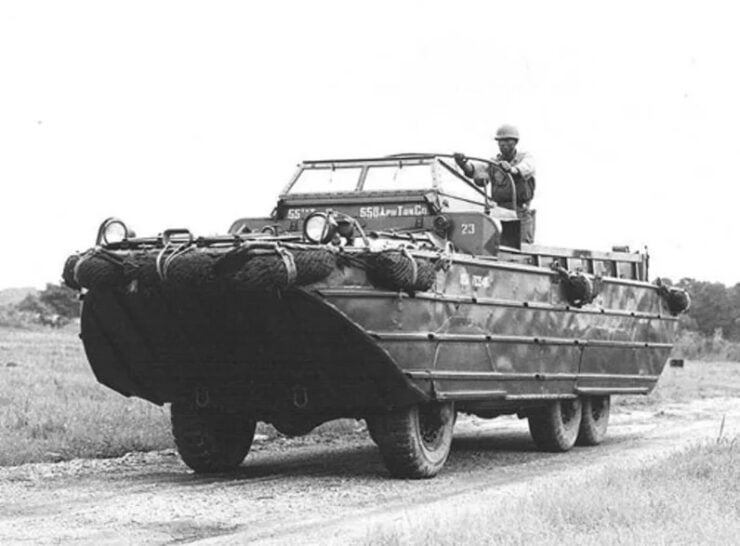

A steel watertight hull was designed, offering excellent entry and departure angles for beach landings, and it was given a forward cockpit with a long cargo and crew area behind. Power was provided by the 269 cubic inch (4 liter) GMC Model 270 straight-six engine, which sent power back through a 5-speed overdrive transmission to a special transfer case for the propeller, and a dual-range transfer case for the three axles.
The transmission also had a PTO (power take off) which could operate a winch or an air compressor. The former helped the vehicle rescue itself when it got bogged, and the latter was largely used for increasing tire pressures when shifting from off road to on road driving.
With weight being a major concern, the DUKW wasn’t armored, with a body made from lighter weight 1⁄16 and 1⁄8 inch sheet steel. This could be punctured by rifle fire, and so the designers included a high-capacity bilge pump that could keep the vehicle afloat even with multiple bullet holes in the hull.
The Modified DUKW 6×6 Shown Here
The DUKW shown in this article has been modified for recreational tours and for many years it’s been based in Seattle, Washington where it has taken countless thousands of tourists on journeys around the city.
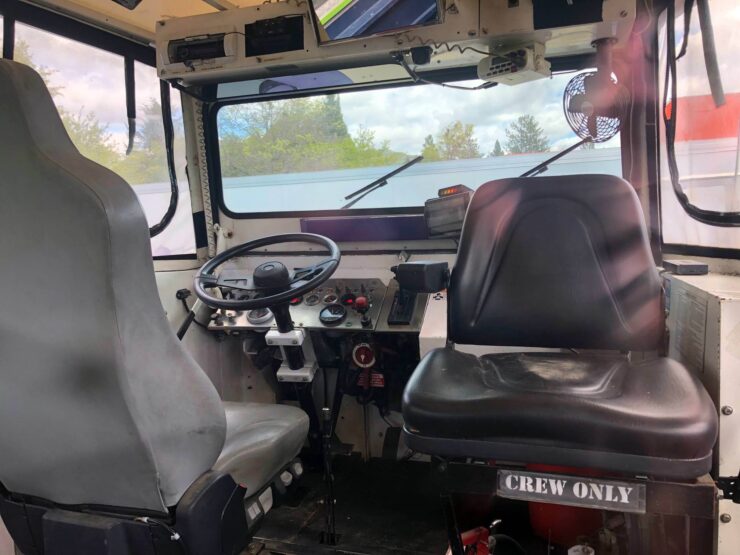

It’s finished in eye-catching purple paint with a white roof, and it’s now powered by a replacement 7.3 liter Navistar turbodiesel V8 which is linked with an Allison 4-speed automatic transmission – making driving a little easier than the original manual transmission unit.
It’s now being offered for sale out of Medford, Oregon with a clean Oregon title listing the vehicle as a 1980 REO DUKW. If you’d like to read more about it or register to bid you can visit the listing here on Bring a Trailer.
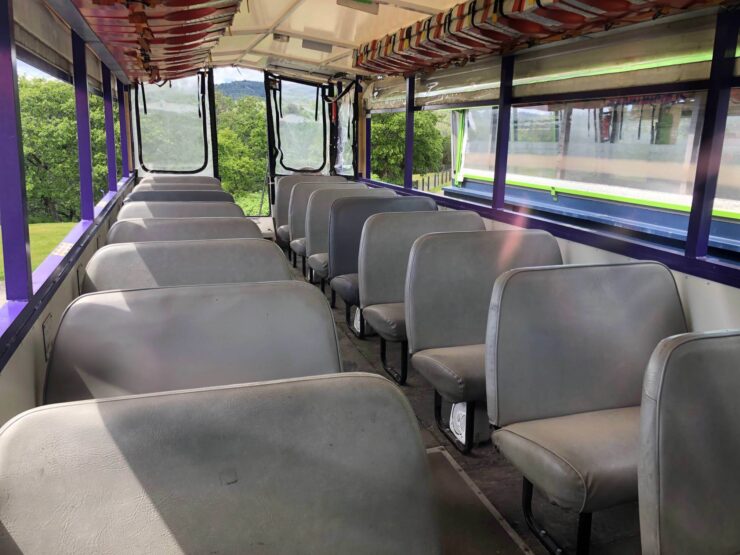
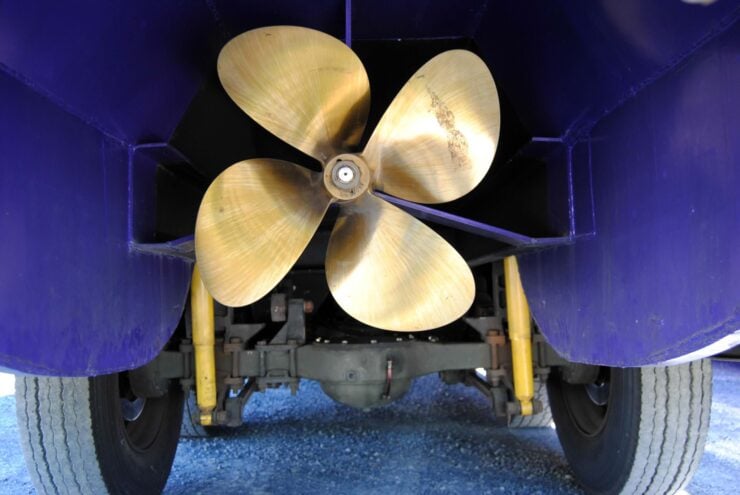
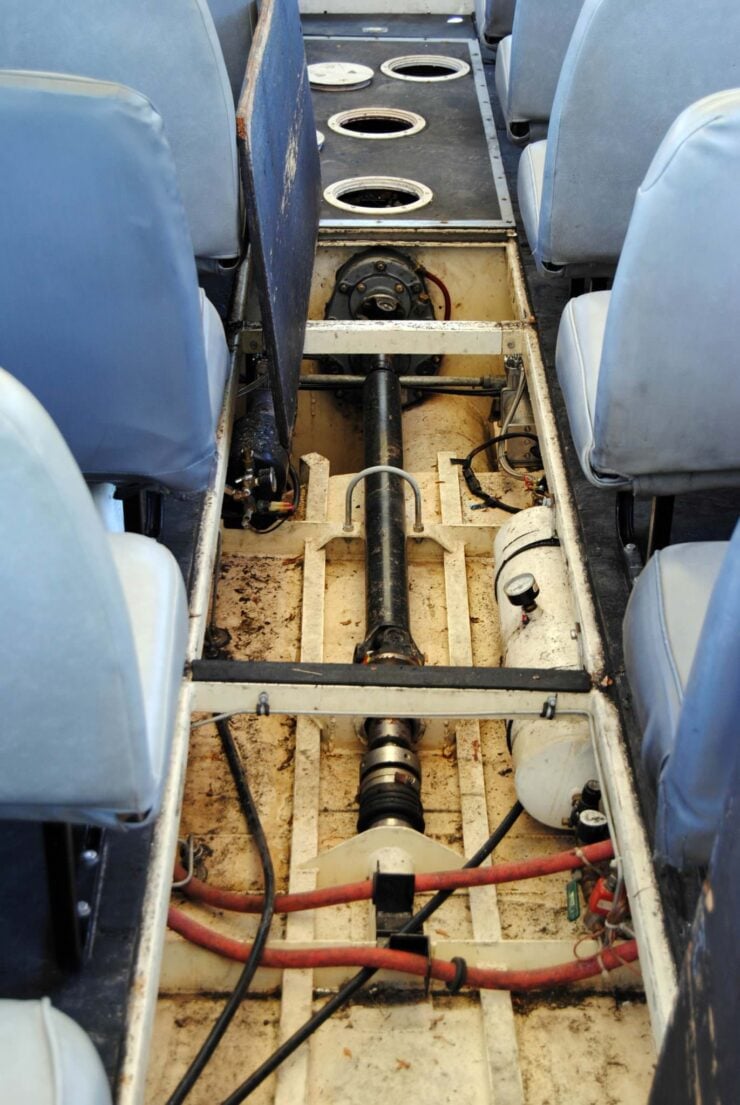
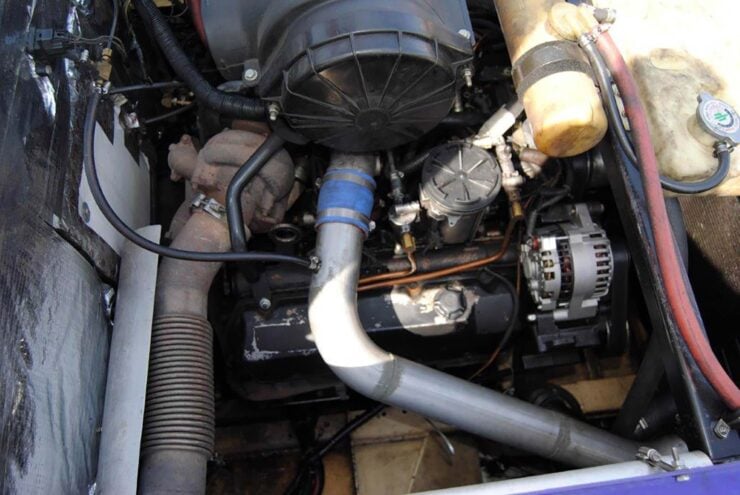
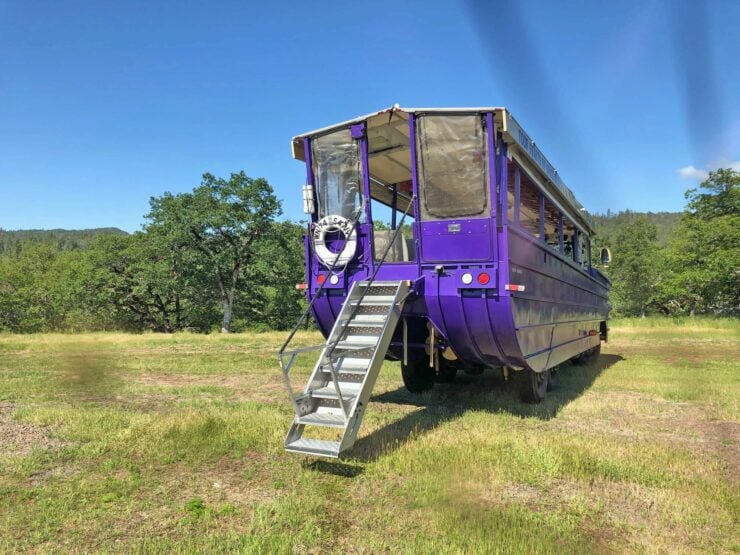
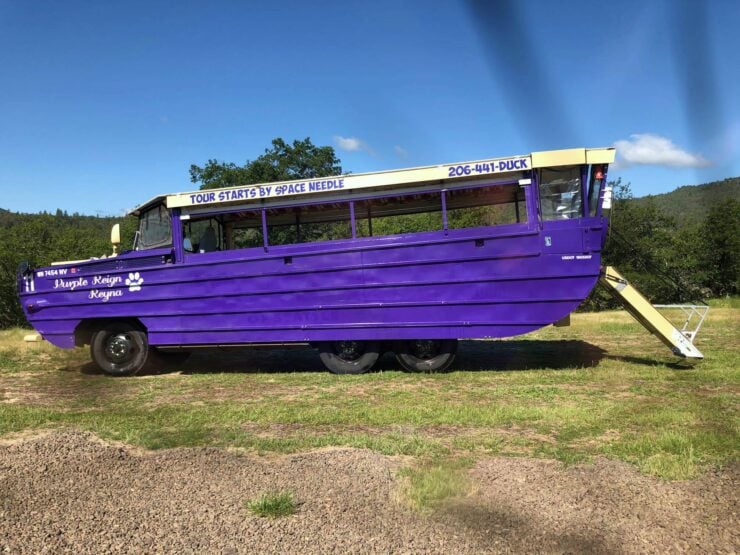
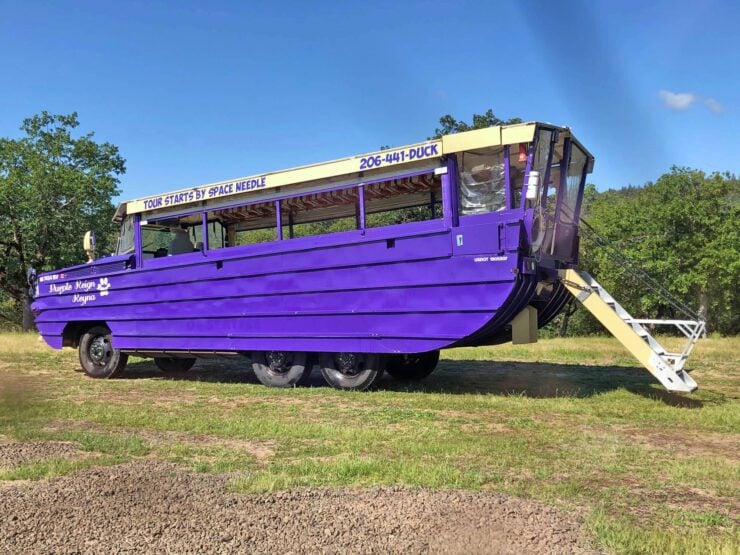
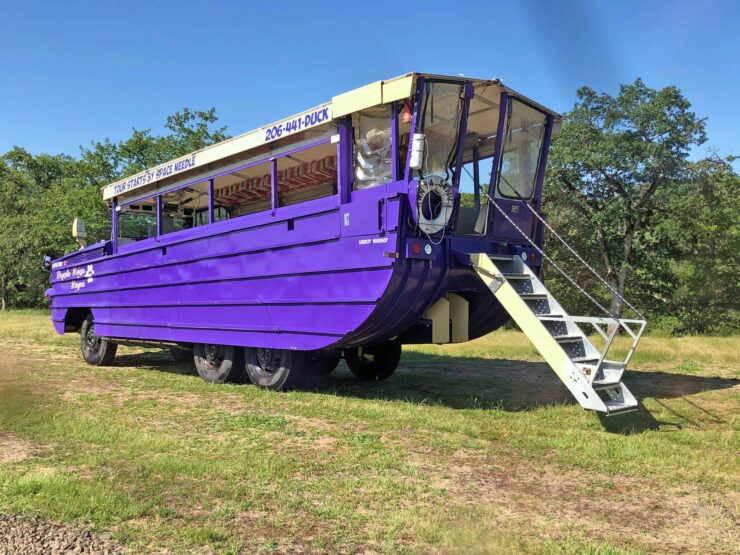
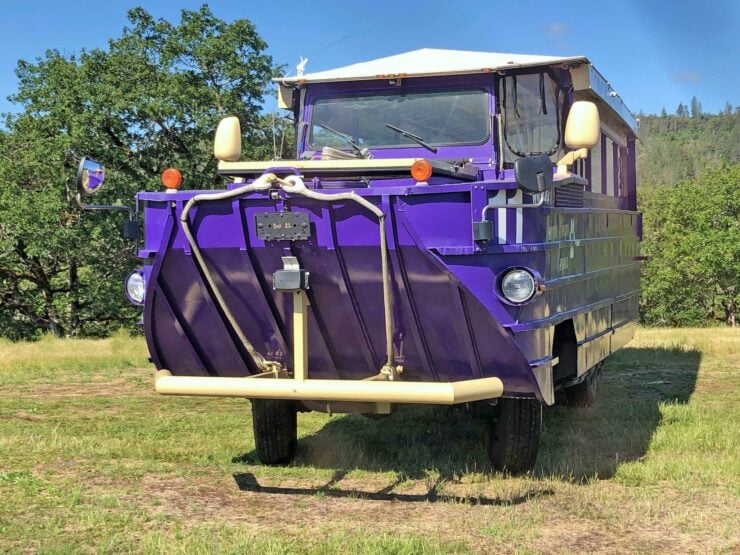
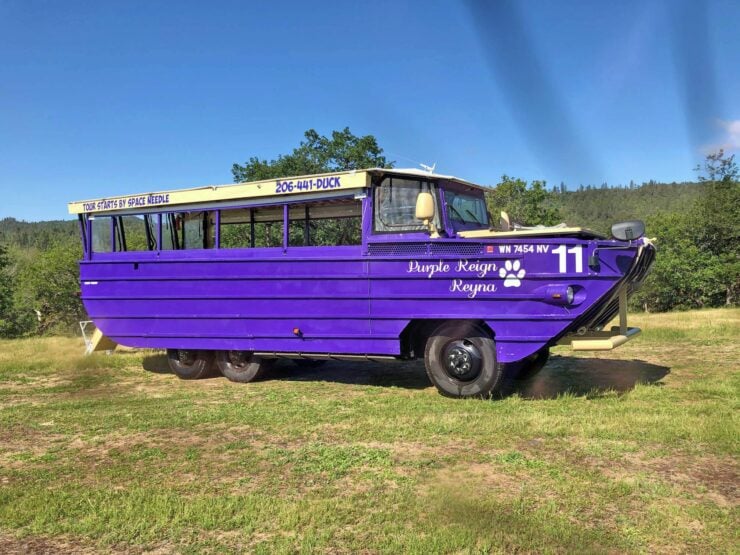
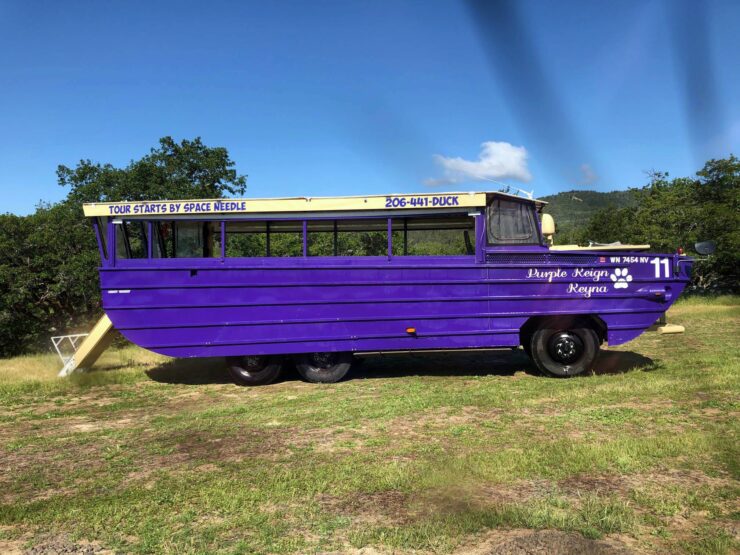
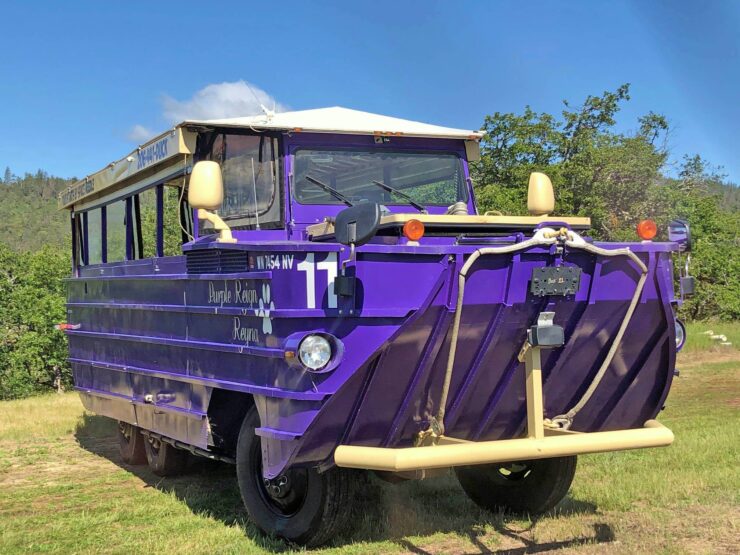
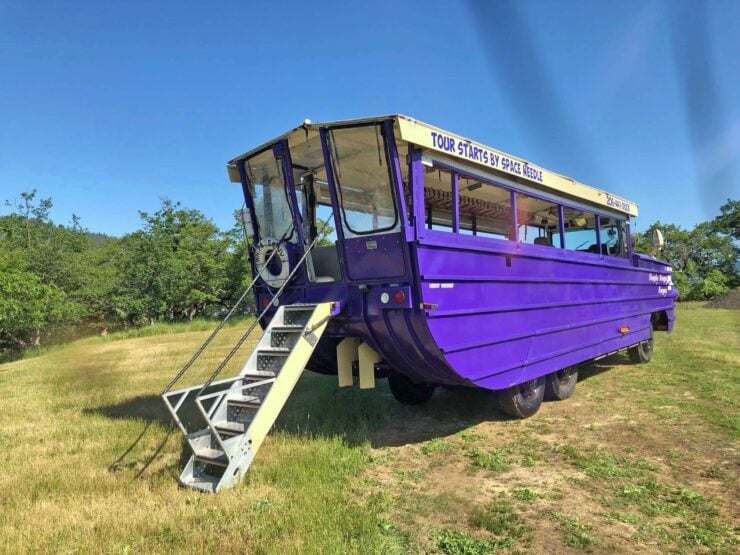
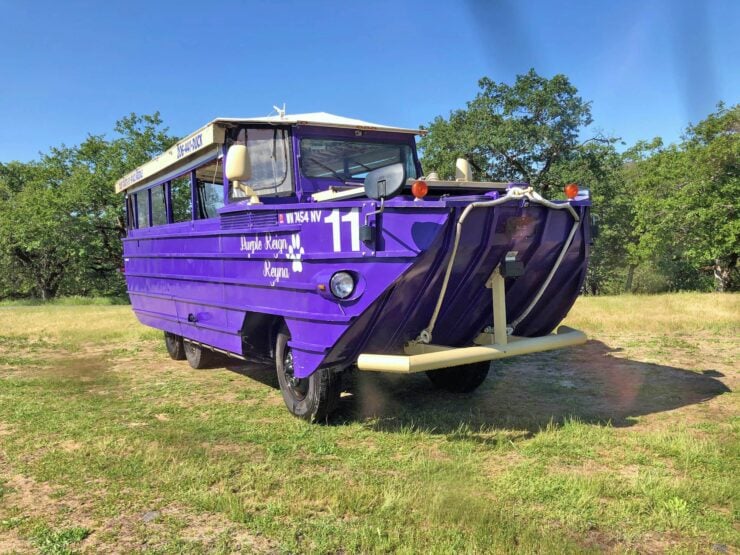
Images courtesy of Bring a Trailer

